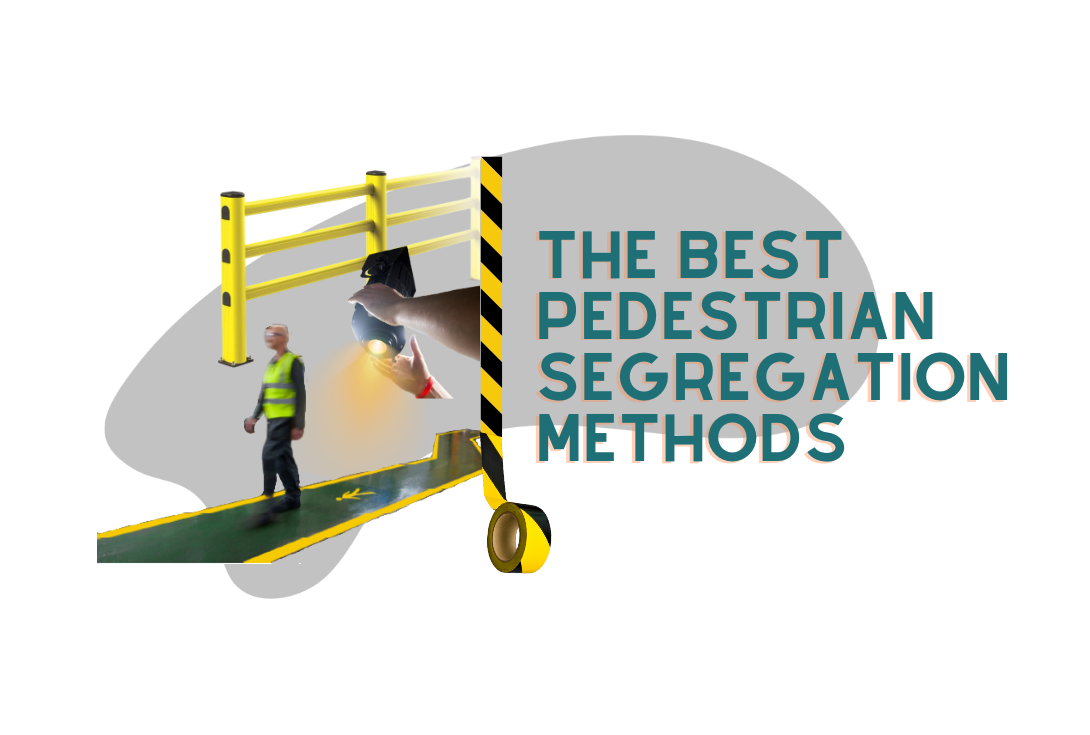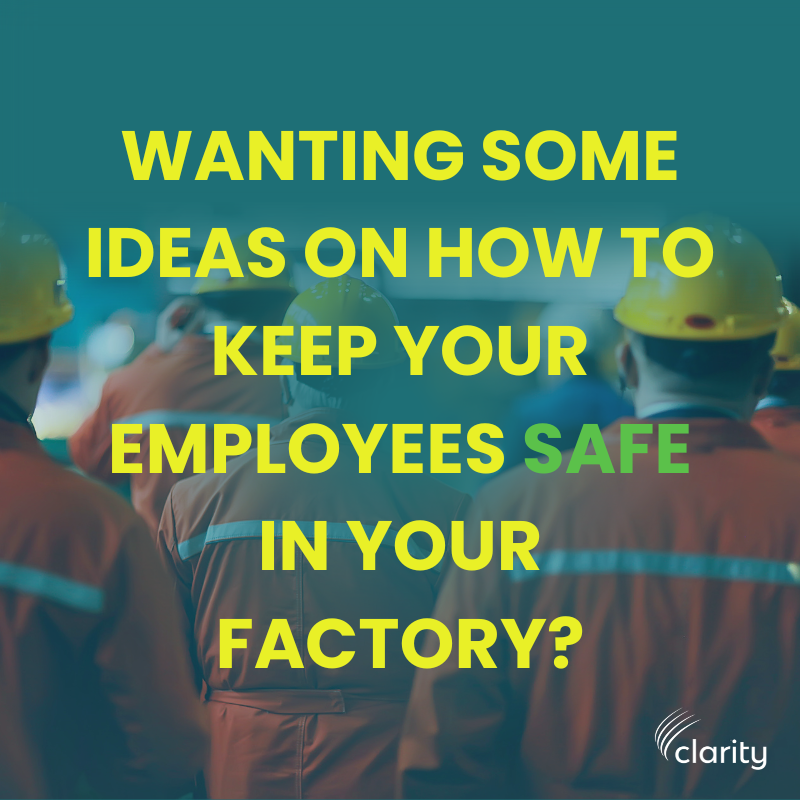Safety Barriers 101: The Different Types and Their Uses
 By
Clarity Visual Management
·
3 minute read
By
Clarity Visual Management
·
3 minute read
The Lean and visual management specialists at Clarity are dedicated to transforming existing warehouses and guiding the fit-out of new factories. With health and safety being a top priority for all kinds of industrial and logistics sites, in this blog we’re taking a look at the different types of safety barriers.

What are safety barriers?
Safety barriers are physical structures or devices designed to prevent accidents, protect individuals, and control access to specific areas in order to enhance overall safety in the workplace. These barriers serve as a form of protection by either physically blocking or limiting access to certain zones, machinery, or potentially hazardous areas. Due to their versatile applications, there are multiple types of safety barriers used in factories and warehouses.
Why are safety barriers so important?
Going further in-depth in regard to how exactly safety barriers benefit factories and warehouses, here are some of the benefits they bring when designed around the specific needs of a site:
Accident prevention: Safety barriers for pedestrians and operators should be strategically placed to prevent accidents and injuries, helping to keep workers and visitors away from potential dangers.
Fall protection: Elevated work surfaces, mezzanines, platforms and other raised areas in factories can pose a risk to employee safety. Guardrails and other fall protection barriers are used to prevent workers from accidentally falling off these elevated areas.
Traffic control: In busy factory environments where vehicles such as forklifts, pallet jacks and other material handling equipment operates, safety barriers help to control the flow of traffic. They define designated pathways for vehicles and pedestrians, reducing the risk of collisions. Traffic control can be further optimised by combining barriers with our LED projected floor markings.
Machine safety: Machinery and equipment in factories often have moving parts that can pose serious risks. Safety barriers for machinery are used to physically separate workers from these moving parts, reducing the likelihood of accidental contact and injuries.
Access control: Safety barriers help to control access to restricted areas within a factory. This is crucial for preventing unauthorised personnel from entering zones with potential hazards, such as machinery rooms, electrical panels or chemical storage areas.
Emergency evacuation routes: Safety barriers may be used to define and protect evacuation routes. Clear pathways ensure that in the event of an emergency such as a fire, workers can quickly and safely exit the facility without obstruction.
Compliance with regulations: All industrial sectors are subject to safety regulations and standards. The use of safety barriers helps companies to comply with these regulations, demonstrating a commitment to providing a safe working environment for employees.
Liability reduction: Employers have a responsibility to provide a safe workplace for their workers. By implementing safety barriers, companies can reduce the risk of accidents and injuries, which in turn increases employee confidence and can help to mitigate legal and financial liabilities.
What are the different types of safety barriers?
Safety barriers come in all shapes and sizes depending on their application. Here are some of the most common:
Guardrails: Guardrails are barriers typically installed along walkways, platforms or elevated surfaces to prevent workers from falling. They must be positioned at a suitable height to provide effective protection.
Racking protectors: Safety barriers for racking protection are used to protect storage areas, such as pallet racks, from damage caused by forklifts or other material handling equipment. This helps to maintain the structural integrity of the storage systems and reduces the risk of accidents.
Safety fencing: Safety fencing is used to create secure enclosures around hazardous machinery or restricted areas. This helps in preventing unauthorised access and reduces the risk of accidents.
Safety bollards: Bollards are short, sturdy posts installed in strategic locations to prevent vehicles from entering certain areas. They are commonly used to protect pedestrian walkways, machinery and other critical zones, plus they can be used in car parks and trade yards.
Safety barriers for doors: Loading docks and other entrances or doorways pose specific safety challenges. That’s why safety barriers for industrial doors are often installed to prevent accidents and product damage during loading, unloading and day-to-day movement.
Traffic barriers: In areas where vehicles operate, such as forklifts and other material handling equipment, traffic barriers are used to define safe pathways, separate pedestrian and vehicle traffic, and prevent collisions.
Collision barriers: In areas where the risk of collisions is high, such as at intersections or tight corners, collision barriers can be installed to absorb impact and prevent damage to structures or equipment.
Ask us about the next generation of safety barriers
If your factory or warehouse is currently using metal or plastic safety barriers, you’ll most likely find that they have many limitations. For instance, if a forklift truck were to collide with one of these traditional types of safety barrier, the vehicle, the materials being transported and even the barrier itself are likely to sustain damage, plus the operator may become injured due to insufficient protection from the impact.
The solution is our bright yellow polymer safety barriers, which flex upon collision, absorb the kinetic energy of the impact, and instantly return back to their original shape. This results in minimal energy being transferred to the vehicle, its driver and the products or materials being moved, which is a huge benefit for employee wellbeing, vehicle maintenance, and of course your bottom line.
All of the safety barrier varieties described above are available in this innovative material and they can be designed around the precise layout and needs of your industrial premises. Simply get in touch with our team and we’ll help you to take health and safety to a whole new level.
If you’re ready to create a truly Lean and visual factory or warehouse that has safety, efficiency and profitability at its very core, contact our team on +44 (0)1482 296451 or fill in our contact form to book your free consultation.


